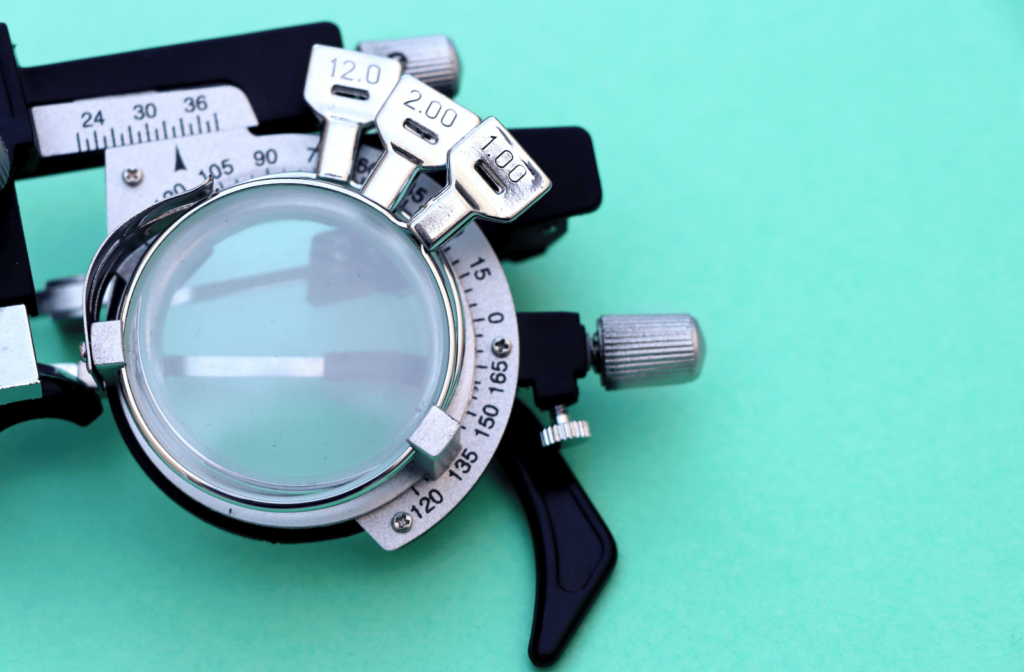Have you ever had trouble seeing distant objects clearly, even with glasses or contacts? If so, you may have high myopia. Myopia, also known as nearsightedness occurs when the shape of your eye causes light to focus incorrectly on your retina, resulting in blurry vision for distant objects.
But what is high myopia? High myopia, is a condition where the degree of nearsightedness is particularly severe. People with high myopia may have trouble seeing objects that are far away, even with the use of glasses or contacts.
They may also be more prone to certain eye problems, such as retinal detachment, glaucoma, and cataracts. It’s important to see your eye doctor for regular eye exams to detect myopia early and develop a treatment plan.
What Is Myopia?
Myopia is a common refractive error that occurs when the shape of your eye causes light to focus incorrectly on your retina. The retina is the light-sensitive tissue in your eye that receives and organizes visual information, and when light lands in front of the retina instead of directly on it, it can cause blurry vision.
Myopia often runs in families, so if your parent has it, you might be at risk of developing it too. It’s most common in children between the ages of 6 and 14, and it can sometimes get worse during adolescence.
About 30% of the Canadian population has myopia, and the prevalence of myopia is growing worldwide. It’s estimated that by 2050, more than half of the world’s population will have myopia.
If you have myopia, it’s important to address it as soon as possible. Even a relatively mild case of myopia in childhood can progress to a severe case by the time you reach adulthood. And if you have high myopia, it increases your risk of developing a sight-threatening eye condition.
What Is High Myopia?
But what is high myopia? High myopia, is a condition where the degree of nearsightedness is particularly severe. If you have high myopia, you might have a really hard time seeing things that are far away, even with glasses or contacts.
People with high myopia are also more prone to certain eye problems, such as retinal detachment, glaucoma, and cataracts. These conditions can be serious, so it’s important to take care of your eyes if you have high myopia.
How to Treat Myopia
While myopia can’t be cured, several effective treatments can help manage the condition and improve vision. These include:
- Glasses or contact lenses
- Orthokeratology
- Refractive surgery
- Vision therapy
Glasses or Contact Lenses
Eyeglasses or contact lenses are the most common and straightforward ways to correct myopia. They work by bending light in a way that allows it to focus correctly on the retina, resulting in clearer vision.
There are many different types of eyeglasses and contact lenses available:
- Multifocal lenses
- MiSight contact lenses
- MyoVision & Myopilux
It’s important to work with an eye care professional to find the best option for your needs.
Orthokeratology
Orthokeratology involves wearing specially designed rigid contact lenses while sleeping. The lenses reshape the front surface of the eye (the cornea) to correct vision. The reshaped cornea then maintains its new shape even when the lenses are removed, providing clear vision during the day.
Orthokeratology is a good option for people who don’t want to wear eyeglasses or contact lenses during the day.
Refractive Surgery
There are several surgical options available for people with myopia, including LASIK (laser-assisted in situ keratomileusis). This procedure works by reshaping the cornea to allow light to focus correctly on the retina.
While LASIK is generally safe and effective, it’s are not suitable for everyone, and it’s important to carefully weigh the potential risks and benefits before deciding if LASIK is right for you.
Vision Therapy
Vision therapy involves a series of exercises designed to strengthen the eye muscles and improve visual skills. Vision therapy can be helpful for people with myopia who also have issues with eye coordination and focusing.
What Else Can You Do to Manage Myopia?
In addition to these treatments, there are a few things you can do to help manage your myopia:
- Follow your eye care professional’s recommendations for glasses or contact lens wear and care.
- Take regular breaks from reading or other close-up work to reduce eye strain.
- Protect your eyes from the sun’s harmful UV rays by wearing sunglasses or a hat with a brim.
- Eat a healthy diet that includes foods rich in vitamins A and C, which are important for eye health.
If you have myopia, it’s important to address it as soon as possible. Even a relatively mild case of myopia in childhood can progress to a severe case by the time you reach adulthood. And if you have high myopia, it increases your risk of developing a sight-threatening eye condition.
That’s why it’s so important to get myopia control therapy, which can slow eye growth using special glasses, contact lenses, surgery, or vision therapy.
Myopia Management at Advance Eye Care Center
If you’re concerned about your vision or your child’s vision, don’t hesitate to book an appointment to visit Advance Eye Care Center. We can perform an eye exam and recommend the best treatment option for you. With proper treatment, you can enjoy clear, comfortable vision for years to come.




